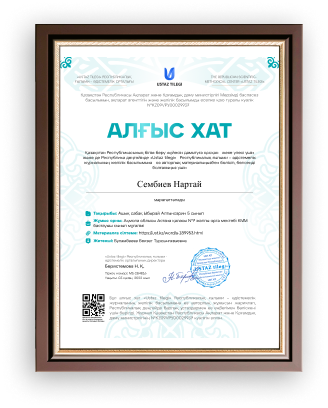
Бонусты жинап картаңызға (kaspi Gold, Halyk bank) шығарып аласыз
Методическое пособие Развитие функциональной (читательской) грамотности на уроках английского языка

/
и
TEACHERS EMBRACE DIGITAL RESOURCES ТО PROPEL LEARNING
AvallaЫe TechnolOQles ln the Classroom
-
• , Handhelds (lncludlnQ
cell phones, smart phones)
-
, TaЫets/electronlc readers
Canadian
EdTech
'
By Stan Barstow
morning wouldn’t have given a bent penny for my chances. But that’s how things work out sometimes. Wednesday ... I just don’t know how I’ll live till then. But course I do, and now here I am waiting on the corner at twenty-five to eight. She’s late, but only five minutes, and I was here ten minutes early to make sure I didn’t miss her so that makes it seem more.
by Nick Hornby
(there were loads of kids at school, he reckoned, kids who stole and swore too much and bullied other kids, whose mums and dads had a lot to answer for). If you looked at it that way, there wasn’t an awful lot to think about. But his mum seemed to be saying that there was more to it than that. She was telling him she had a plan. If she had a plan, then he had a choice. He could trust her, believe her when she said she knew what she was doing [... ] Or he could decide that, actually, she was off her head [... ] Either way it was scary. He didn’t want to put up with things as they were, but the other choice meant he’d have to be his own mother, and how could you be your own mother when you were only twelve? He could tell himself to say please and thank you and sorry, that was easy, but he didn’t know where to start with the rest of it. He didn’t even know what the rest of it was.
Save our cinema. Join us tonight 8 pm outside the mayor's house. Dexter, 17
3 Twitter allows people who think the same way to get together and do something about the things they care about. They can share information, organise campaigns and put pressure on governments and big businesses to change. It allows people to stand up to things such as cyber bullying, sexism and racism. Twitter has given the man and woman on the street the power.
Of course, having the words in your head so that you can think about them isn’t enough – you need to say them. But just saying them to yourself isn’t enough either, according to Boucher and Lafleur, two researchers at the University of Montreal. To effectively memorise new words, you’ve got to repeat them out loud to another person. When you’ve read a text and found some words to learn, try to summarise for a friend what you’ve read, making sure to incorporate the new words into your conversation. If you’re a learner of English yourself, why not try it with this text? So, there you have it: the five principles which I have followed to learn several languages to a pretty decent level. But hey – there’s nothing special about me. You can do it too!
The ancient Romans had a saying: ‘Verba volant sed script manent’ – ‘Spoken words fly away, but written words stay’. What they were trying to tell us is that you need to have a way of permanently recording words in order to retain them in memory. For some people, the physical act of writing something down aids their ability to remember it. Just scribbling it on the back of an envelope isn’t enough – it’s got to be in a place where you’ll be able to access it later, maybe on
3
In the 1880s, German psychologist Hermann Ebbinghaus established that when we learn something, we initially retain it quite well. But over time, that memory deteriorates; Ebbinghaus termed this phenomenon the forgetting curve. But he also discovered that this tendency to forget can be combatted. If you revisit newly learnt information at time intervals, it becomes less and less easy to forget. What this means for vocabulary learners is that each day, you should take another look at the words you learnt yesterday, the day before, and the day before that. That way, they should make it into your long-term memory.
4
your phone or in a notebook.
5
Hearing these shouts from inside the tent, Henchard said in a loud voice, ‘Those men out there get rid of their horses when they don’t want them. Why can’t we do that with our wives too?’ One or two men laughed. ‘I wouldn’t be surprised if there was someone who would buy your wife from you. She looks like a fine woman,’ said one of them. Now was a good time to stop this joke: to continue with it would not be sensible. But Henchard was in no mood to be sensible. ‘Well, here’s your chance. What will you offer me for this rare beauty?’ he said, pointing at Susan. ‘Michael, you have said things like this before, but this joke is no longer funny,’ said the young woman. ‘I know I’ve said it before and I meant it. All I want is a buyer,’ he replied. Raising his voice he said, ‘Well, is anyone interested? If you are, now’s your chance.’ Again there were a few laughs. Susan begged him to leave the tent, ‘Come on Michael, it’s getting dark and I’ve had enough of this nonsense. If you don’t come now, I will leave without you.’ But Henchard did not move; it was almost as if he didn’t hear her. This time his voice was even louder, ‘This woman is no good to me. Who among
fortune. But instead, here I am, with only fifteen shillings in my pocket and two extra mouths to feed.’ It was getting late and outside the tent the fair was coming to an end. The shouts of men wanting to sell their last few animals could be heard. ‘Who’ll take this last horse?’ shouted one man. ‘She’s a fine animal, just a little over five years old, but there’s nothing wrong with her at all. Who’ll give me forty shillings for her? You won’t get a better price than that.’
* * *
you will buy her?’
from “The Mayor of Casterbridge" by Thomas Gardy
Алматинская область, Енбекшиказахский районКГУ "средняя школа имени Д. Конаева"
Учителя английского языка
Дурсунова Рейхан Гелоглановна
Попова Светлана Геннадьевна
Серикбаев Ельдос Тимурович
Методическое пособие
Развитие функциональной (читательской) грамотности на уроках английского языка
Пояснительная записка
Часто говорят, что чтение - это одно из истинных удовольствий жизни. Однако чтение на своем родном языке - это одно, а чтение на другом языке - совсем другое, что влечет за собой определенные трудности для учащихся. Проблемы грамотности, образования, культуры, чтения являются особенно значимыми в наши дни и выходят на уровень проблем, от которых зависит благополучие нации.
Читательская грамотность – способность человека понимать и использовать письменные тексты, размышлять о них и заниматься чтением для того, чтобы достигать своих целей, расширять свои знания и возможности, участвовать в социальной жизни.
Функциональная грамотность –способность человека вступать в отношения с внешней средой и максимально быстро адаптироваться и функционировать в ней.
О существовании функциональной грамотности мы узнаем, только столкнувшись с ее отсутствием. Поэтому приходится говорить не столько о функциональной грамотности, сколько о функциональной безграмотности, что является одним из определяющих факторов, тормозящих развитие общественных отношений. Поэтому проблема функциональной грамотности рассматривается обычно не как научная и смысловая проблема, а как проблема деятельностная, как проблема поиска механизмов и способов ускоренной ликвидации безграмотности.
Чем понятие «чтение» отличается от понятия «функциональное чтение»? Чтение – это технология интеллектуального развития, способ обретения культуры, посредник в общении, средство для решения жизненных проблем. Без чтения невозможно интеллектуальное развитие и самообразование, которое продолжается в течение всей жизни. Функциональное чтение –это чтение с целью поиска информации для решения конкретной задачи или выполнения определенного задания. При функциональном чтении применяются приемы просмотрового чтения (сканирования) и аналитического чтения (выделение ключевых слов, подбор цитат, составление схем, графиков, таблиц). Ученик, у которого сформированы навыки функционального чтения, может «свободно использовать навыки чтения и письма для получения информации из текста – для его понимания, сжатия, преобразования и т.д.
Выделяют три группы читательских умений:
-
Ориентация в содержании текста (умение определять главную тему, общую цель или назначение текста; выбирать из текста или придумать заголовок; формулировать тезис, выражающий общий смысл текста; объяснять порядок частей, содержащихся в тексте; находить в тексте требуемую информацию и т.п.).
-
Преобразование и интерпретация текста (умение преобразовывать текст, используя новые формы представления информации: формулы, графики, диаграммы, таблицы; сравнивать и противопоставлять заключённую в тексте информацию разного характера; обнаруживать в тексте доводы в подтверждение выдвинутых тезисов и т.п.).
-
Оценка информации (откликаться на содержание текста; оценивать утверждения, сделанные в тексте, исходя из своих представлений о мире; находить доводы в защиту своей точки зрения и т.п.).
Овладение этими умениями и означает «смысловое чтение», которое является фундаментом всех обозначенных в новом стандарте результатов образования.
В своей практике учителя часто сталкиваются с многочисленными проблемами и затруднениями обучающихся при работе с иноязычным текстом, а именно: учащиеся не знают значений многих слов,не умеют читать диаграммы,не умеют озаглавить текст, не понимают смысла написанного, не могут выделить ключевые слова, не в состоянии сформулировать
вопрос, не могут выбрать способ решения задачи, не умеют актуализировать наличные умения, не могут перенести знания и умения из одной области на другую, часто подменяют задание на более привычное, знакомое.
Английский язык – учебный предмет, познавательная ценность которого чрезвычайно высока: на таких уроках формируется мышление, прививается чувство любви к иностранному языку, через язык осмысливаются общечеловеческие ценности, воспитывается личность, с помощью языка происходит интеллектуальное развитие ребенка, усвоение всех других учебных дисциплин.
В формировании функциональной грамотности учащихся способствуют задания с использованием сплошных и несплошных текстов.
К сплошным текстам относят тексты, читаемые в повседневной жизни:
-
описание (отрывок из рассказа, стихотворения, описание человека, места, предмета и т.д.);
-
повествование (рассказ, стихотворение, повесть, басня, письмо, статья в газете или журнале, статья в учебнике, инструкция, реклама, краткое содержание фильма, спектакля, пост блога, материалы различных сайтов и т.д.);
-
рассуждение (сочинение-размышление, комментарий, аргументация собственного мнения).
К несплошным текстам относятся графики, диаграммы, таблицы, схемы (кластеры), географические карты и карты местности, план помещения, входные билеты, расписание движения транспорта, карты сайтов и т.д.
Основные требования к тексту, направленному на формирование навыков функциональной читательской грамотности:
-
Текст должен быть ученику интересен.
-
Текст должен содержать неизвестную ученику информацию. Но, при этом, актуальную для ученика.
-
Уровень трудности текста должен соответствовать возрасту ученика.
-
Объем текста не должен превышать норму (исходя из уровня и возраста учащихся).
-
Текст должен развивать кругозор.
-
Текст может быть взят из "реальной жизни"
-
Текст не должен быть перегружен цифрами, датами, терминами.
-
Иллюстрации не отвлекают, а помогают разобраться в содержании текста.
-
Текст должен быть структурирован: заголовок, абзацы, прямая речь и т.д.
-
При необходимости нужно адаптировать текст.
-
В тексте иллюстрации должны способствовать развитию познавательной активности.
-
В тексте не должно быть ошибок.
-
Содержание текста должно опираться на жизненный опыт ребенка.
Данное методическое пособие содержит 15 сплошних и 12 несплошных текстов. После каждого текста предложены 3 разных задания для проверки понимания прочитанного.
 Unbroken texts Text №
1
Unbroken texts Text №
1
Sacrifice for survival?
This is the story of two ambitious mountain (limbers, Joe Simpson and Simon Yates), whose story was later turned into a film. Touching the Void, and it started with an outstanding success. Joe and Simon managed to climb the West Face of Siula Grande in the Peruvian Andes.
![]()
1 After reaching the summit, Joe and Simon decided to go back down via the North Ridge, on extremely risky but faster route. Their ascent had already taken much longer than they
had intended because of bad weather.
![]()
2 So it wasn't possible for them to melt ice and snow for drinking water any more. It was getting dark too, and they knew they needed to descend quickly to the glacier, about 1,000 metres
below.

3 Joe slipped and landed awkwardly, breaking his leg. Both Simon and Joe were in shock. They were at a height of 6,000 metres.

4 They were freezing. They had no communication with the base camp, and there was no chance of a rescue helicopter or any other form of outside help. The situation was really dangerous, not just for Joe, but for both of them. As an enormous snowstorm was building up around them, Simon tied two ropes
together, tied them around Joe, and started lowering his injured friend. Suddenly, the knot got stuck between two rocks and Joe was left hanging from a cliff, in mid-air over a huge crevasse.

5 He tried desperately for more than an hour to pull his friend up, but without success. The situation was absolutely hopeless. Simon imagined both himself and his friend dying in the snow and ice. He didn't want to leave his friend alone, but the more he thought about it, the more he began to understand that there was no way he could save both his own life and that of his friend. For a moment, Simon felt like giving up. But then he decided to cut the rope and save his own life. Joe fell away, right down to the bottom of the crevasse. The next day, when Simon continued down the mountain and passed the area where Joe had landed, he saw nothing, and assumed he was dead. But
he wasn't. Joe had survived the fall.
![]()
6 For the next three and a half days, he continued to descend the mountain, crawling and hopping on one leg under extremely difficult conditions. He even managed to cross a glacier
with no safety equipment or rope assistance whatsoever.
![]()
7 The others were thrilled and amazed to see him especially because they had been preparing to leave. Joe's incredible determination and the fact that he hadn't given up under the most
desperate conditions had helped him to save his own life.
-
Read the article again. Seven sentences have been removed from the article. Choose from the sentences A-H the one which fits each gap (1-7). There is one extra sentence.
A Then something dramatic happened. В Simon couldn't talk to him or see him.
C Several teams had tried before, but they had all failed.
D Both men knew that it would be almost impossible to survive the situation.
E Despite his extreme injuries, he had managed to crawl out of the crevasse.
F And they had run out of fuel for their stove.
G When he finally arrived at base camp, he was absolutely exhausted.
H The weather conditions were dreadful.
-
Which of the following facts were relevant for Simon in making his decision to cut the rope? Put ticks:
-
Siula Grande is part of the Andes region of Peru.
-
The two climbers had already reached the summit.
-
Joe had a broken leg.
-
There was no way they could get help from anywhere.
-
Their way back down was via the North Ridge.
-
The rope got stuck and it was completely impossible to pull joe out of the crevasse
-
-
Read the sentences and write T (True), F (False), NS (Not Stated):
-
Joe and Simon's ascent had already taken much longer than they had intended because of their tiredness. T/F/NS.
-
Joe slipped and landed awkwardly, when they were at a height of 4,000 metres. T/F/NS.
-
Simon called the emergency service, but without any result. T/F/NS.
-
The situation became more dangerous because there were wild wolves in the area. T/F/NS.
-
Simon decided to leave his injured friend and save his own life. T/F/NS.
-
For the next three and a half days, he continued to descend the mountain, crawling and hopping on one leg under extremely difficult conditions. T/F/NS.
-
After the successful rerurn Joe and Simon were interviewed by local jounalists. T/F/NS.
-
Feel good in your runners
Text № 2
Runners
 For 14 years the Sports
Medicine Centre of Lyon (France) has been studying
the injuries of young sports players and sports
professionals. The study has
established that the best course is
prevention … and good shoes.
For 14 years the Sports
Medicine Centre of Lyon (France) has been studying
the injuries of young sports players and sports
professionals. The study has
established that the best course is
prevention … and good shoes.
Knocks, falls, wear and tear...

Eighteen per cent of sports players aged 8 to 12 already have heel injuries. The cartilage of a footballer’s ankle does not respond well to shocks, and 25% of professionals have discovered for themselves that it is an especially weak point. The cartilage of the delicate knee joint can also be irreparably damaged and if care is not taken right from childhood
(10–12 years of age), this can cause premature osteoarthritis. The hip does not escape damage either and, particularly when tired, players run the risk of fractures as a result of falls or collisions. According to the study, footballers who have been playing for more than ten years have bony outgrowths either on the tibia or on the heel. This is what is known as “footballer’s foot”, a deformity caused by shoes with soles and ankle parts that are too flexible.
Protect, support, stabilise, absorb

If a shoe is too rigid, it restricts movement. If it is too flexible, it increases the risk of injuries and sprains. A good sports shoe should meet four criteria: Firstly, it must provide exterior protection: resisting knocks from the ball or another player, coping with unevenness in the ground, and keeping the foot warm and dry even when it is freezing cold and raining. It must support the foot, and in particular the ankle joint, to avoid sprains, swelling and other problems, which may even affect the knee. It must also provide players with good stability so that they do not slip on a wet ground or skid on a surface that is too dry. Finally, it must absorb shocks, especially those suffered by volleyball and basketball players who are constantly jumping.
Dry feet
To avoid minor but painful conditions such as blisters or even splits or athlete’s foot, the shoe must allow evaporation of perspiration and must prevent outside dampness from getting in. The ideal material for this is leather, which can be waterproofed to prevent the shoe from getting soaked the first time it rains.
-
What does the author intend to show in this text?
-
That the quality of many sports shoes has greatly improved.
-
That it is best not to play football if you are under 12 years of age.
-
That young people are suffering more and more injuries due to their poor physical condition.
-
That it is very important for young sports players to wear good sports shoes.
-
-
According to the article, why should sports shoes not be too rigid?
![]()
![]()
-
One part of the article says, “A good sports shoe should meet four criteria.” What are these criteria?
![]()
![]()
![]()
![]()
-
Look at this sentence from near the end of the article. It is presented here in two parts:
“To avoid minor but painful conditions such as blisters or even splits or athlete’s foot (fungal infections),…” (first part)
“…the shoe must allow evaporation of perspiration and must prevent outside dampness from getting in.” (second part)
What is the relationship between the first and second parts of the sentence? A the second part contradicts the first part.
B. repeats the first part.
C. illustrates the problem described in the first part.
D. gives the solution to the problem described in the first part
 Text №
3
Text №
3
Technology creates the need for new rules
SCIENCE has a way of getting ahead of law and ethics. That happened dramatically in 1945 on the destructive side of life with the atomic bomb, and is now happening on life’s creative side with techniques to overcome human infertility.
Most of us rejoiced with the Brown family in recently the births of healthy babies that had once been embryos frozen to await the proper moment of implantation in the mother-to-be.

It is about two such frozen embryos in Australia that a storm of legal and ethical questions has arisen. The embryos were destined to be implanted in Elsa Rios, wife of Mario Rios. A previous embryo implant had been unsuccessful, and the Rioses wanted to have another chance at becoming parents. But before they had a second chance to try, the Rioses perished in an airplane crash.

What was the Australian hospital to do with the frozen embryos? Could they be implanted in someone else? There were
numerous volunteers. Were the embryos somehow entitled to the Rioses’ substantial estate? Or should the embryos be destroyed? The Rioses, understandably, had made no provision for the embryos’ future.

The Australians set up a commission to study the matter. Last week, the commission made its report. The embryos should be thawed, the panel said, because donation of embryos to someone else would require the consent of the “producers,” and no such consent had been given. The panel also held that the embryos in their present state had no life or rights and thus could be destroyed.
The commission members were conscious of treading on slippery legal and ethical grounds. Therefore, they urged that three months be allowed for public opinion to respond to the commission recommendation. Should there be an overwhelming outcry against destroying the embryos, the commission would reconsider.
Couples now enrolling in Sydney’s Queen Victoria hospital for in vitro fertilization programs must specify what should be done with the embryos if something happens to them.

This assures that a situation similar to the Rioses won’t recur. But what of other complex questions? In France, a woman recently had to go to court to be allowed to bear a child from her deceased husband’s frozen sperm. How should such a request be handled? What should be done if a surrogate mother breaks her child-bearing contract and refuses to give up the infant she had
promised to bear for someone else?
Our society has failed so far to come up with enforceable rules for curbing the destructive potential of atomic power. We are reaping the nightmarish harvest for that failure. The possibilities of misuse of scientists’ ability to advance or retard procreation are manifold. Ethical and legal boundaries need to be set before we stray too far.
-
Underline the sentence that explains what the Australians did to help decide how to deal with the frozen embryos belonging to a couple killed in the plane crash.
-
List two examples from the editorial that illustrate how modern technology, such as that used for implanting frozen embryos, creates the need for new rules.
![]()
![]()
![]()
-
Choose the right answers A, B or C:
-
The author site the example of Brown family to illustrate
-
A the progress of science
B the the side effects of implantation
C the high cost of medical service
-
Mario and Elsa Rios didn't manage to become parents because
A they didn't have enough money
B they had a fatal accident
C they moved abroad
-
What caused the public outcry?
A the decision to sell embryos
B the decision to use a mother-to-be
C the decision to destroy the embryos
-
What is the main problem which can arise with surrogate mother?
A she can refuse to give up the child
B she may begin smoking
C she can refuse the contract after receiving the money
-
What we can conclude according to the last paragraph?
A Medecine should receive a good finacial support.
B Ethical and legal issues should be made into account in advance.
C Staff for medical organisations should be chosen thoroughly.
Text № 4
The ultimate survivor
 When
he was 20, he broke his back in three places in a parachuting accident. He climbed Mount Everest at the age of 23.
Shortly afterwards, he led a trek across
the frozen North
Atlantic.
When
he was 20, he broke his back in three places in a parachuting accident. He climbed Mount Everest at the age of 23.
Shortly afterwards, he led a trek across
the frozen North
Atlantic.
In 2007, he set another world record by flying over Mount Everest in a powered paraglider. This helped to raise one million dollars for the Global Angels Foundation, a charity that supports children in Africa.

His first book, Facing the Frozen Ocean, got shortlisted for the UK’s ‘Sports Book of the Year’. Since then he has written more than 15 books, including the No 1 Bestseller: Mud, Sweat and Tears.

His name is Bear Grylls, and he was the host of Discovery Channel’s famous TV show, Man vs Wild. In the show, he was left
stranded in remote locations in order to demonstrate survival techniques. Millions of viewers watched, breathless, as he killed the most poisonous snakes and ate them, climbed extremely dangerous cliffs, parachuted from helicopters and balloons, performed amazing ice climbing stunts, ran through a forest fire, and ate all kinds of insects.
Grylls continues to impress with both his amazing shows, and his incredible charity work. And he has set up his own company, Bear Grylls’ Survival Academy, where everyone can learn survival skills from him and his team of highly trained experts. Recently, Grylls founded Young Survivors - training courses for teenagers, comprising a combination of survival skills and adventure tasks designed to teach the fundamentals of outdoor survival and self-rescue. Those who complete the course are given a Young Survivors Award. Techniques taught include how to build and light a fire, how to navigate in both day and night, building a shelter, extreme weather survival, tracking and hunting and tying knots. A key focus of the course is getting young survivors back in touch with nature and away from technology.

In Grylls’ own words: ‘The thing I love about the Young Survivor Course is that it is designed to put young adults in just the sort of challenging, character-building and practical situations that help define and distinguish people as adults. So often, youngsters can feel almost over-protected and are stopped from experiencing some of the best things in life - but the Young Survivor Award will challenge and empower hem in an incredibly dynamic and fun environment.'
-
Which of these things do you think you could learn from Bear Grylls? Read the article and put the ticks:
-
how to build a fire
-
how to use GPS effectively
-
how to build a shelter in the wild
-
how to survive outdoors in bad weather
-
how to set up your own survival website
-
how to tie knots
-
Answer these questions based on your own opinions. Use evidence from the text to support your ideas.
-
What do you think motivates Bear Grylls?
![]()
-
Why are his TV shows so popular?
![]()
-
Do you think Bear Grylls is successful? Why (not)?
![]()
-
What does Bear Grylls think of the way many young people grow up these days?
![]()
-
Read the sentences and correct the mistakes:
-
This helped to raise one million dollars for the Global Angels Foundation, a charity that supports disabled people in Africa.
-
In the show, Bear was left stranded in tropical rainforests in order to demonstrate survival techniques.
-
He has set up his own company, Bear Grylls’ Survival Academy, where everyone can learn driving skills from him and his team of highly trained coaches.
-
Techniques taught include how to put a tent, how to navigate in both day and night, building a hut, extreme weather survival, tracking and hunting and fishing.
-
The thing I love about the Young Survivor Course is that it is created to put young adults in just the sort of education.
-
A key focus of the course is getting young survivors back in touch with parents and away from computers.
-
Text № 5
ACOL VOLUNTARY FLU IMMUNISATION PROGRAM
 As you are no doubt aware
the flu can strike rapidly and
extensively during winter. It can leave its victims ill
for weeks. The best way to fight the virus is to have a fit and healthy body. Daily exercise and
a diet including plenty of fruit and
vegetables are highly recommended
to assist the immune system
to fight this invading virus. ACOL has decided to offer staff the opportunity to be
immunised against the flu as an
additional way to prevent this insidious virus from spreading amongst us. ACOL has arranged for
a nurse to administer the
immunisations at ACOL, during a half-day session in work
As you are no doubt aware
the flu can strike rapidly and
extensively during winter. It can leave its victims ill
for weeks. The best way to fight the virus is to have a fit and healthy body. Daily exercise and
a diet including plenty of fruit and
vegetables are highly recommended
to assist the immune system
to fight this invading virus. ACOL has decided to offer staff the opportunity to be
immunised against the flu as an
additional way to prevent this insidious virus from spreading amongst us. ACOL has arranged for
a nurse to administer the
immunisations at ACOL, during a half-day session in work
hours in the week of May 17. This program is free and available to all members of staff. Participation is voluntary. Staff taking up the option will be asked to sign a consent form indicating that they do not have any allergies, and that they understand they may experience minor side effects. Medical advice indicates that the immunisation does not produce influenza. However, it may cause some side effects such as fatigue, mild fever and tenderness of the arm.
Who should be immunised?

Anyone interested in being protected against the virus. This immunisation is especially recommended for people over the age of 65. But regardless of age, ANYONE who has a chronic debilitating disease, especially cardiac, pulmonary, bronchial or diabetic conditions. In an office environment ALL staff are at risk of catching the flu.
Who should not be immunised?
Individuals hypersensitive to eggs, people suffering from an acute feverish illness and pregnant women. Check with your doctor if you are taking any medication or have had a previous reaction to a flu injection. If you would like to be immunised in the week of May 17 please advise the personnel
officer, Fiona McSweeney, by Friday May 7. The date and time will be set according to the availability of the nurse, the number of participants and the time convenient for most staff. If you would like to be immunised for this winter but cannot attend at the arranged time please let Fiona know. An alternative session may be arranged if there are sufficient numbers. For further information please contact Fiona on ext. 5577.
Good Health
-
Read the text. Where can we find this kind of text?
-
in a travel journal
-
in a coursebook
-
in a medical brochure
-
-
What is the main aim of the article?
-
inform readers about a new virus
-
inform readers about vaccination
-
involve people into a new political program
-
-
Read the statements and choose the answers A, B, C or D:
-
Which one of the following describes a feature of the ACOL flu immunisation program?
-
Daily exercise classes will be run during the winter.
-
Immunisations will be given during working hours.
-
A small bonus will be offered to participants.
-
A doctor will give the injections.
-
-
This information sheet suggests that if you want to protect yourself against the flu virus, a flu injection is
-
more effective than exercise and a healthy diet, but more risky.
-
a good idea, but not a substitute for exercise and a healthy diet.
-
as effective as exercise and a healthy diet, and less troublesome.
-
not worth considering if you have plenty of exercise and a healthy diet
-
-
According to the information sheet, which one of these staff members should contact Fiona?
-
Steve from the store, who does not want to be immunised because he would rather rely on his natural immunity.
-
Julie from sales, who wants to know if the immunisation program is compulsory.
-
Alice from the mailroom who would like to be immunised this winter but is having a baby in two months.
-
Michael from accounts who would like to be immunised but will be on leave in the week of May 17
-
-

 We
can
talk about the
content of a
piece of
writing (what
it says).
We can
talk about
its style
(the way it
is presented).
Fiona wanted
the style
of this information
sheet to be
friendly and encouraging.
Do you think
she succeeded?
Explain your answer
by referring
in detail
to the layout, style
of writing,
pictures or other graphics
We
can
talk about the
content of a
piece of
writing (what
it says).
We can
talk about
its style
(the way it
is presented).
Fiona wanted
the style
of this information
sheet to be
friendly and encouraging.
Do you think
she succeeded?
Explain your answer
by referring
in detail
to the layout, style
of writing,
pictures or other graphics
![]()
![]()
![]()
![]()
 Text №
6
Text №
6
A kind of loving
Vic Brown is a young draughtsman at an engineering works in northern England in the 1950s. He lives with his mother and father. He is attracted to one of the secretaries at the engineering works
- Ingrid Rothwell - and one day, as they leave work, they run into each other and start walking to the bus stop together.
I ’m going your way,’ she says. I hold the door open for her and get a gorgeous whiff of her scent as she
goes by. We say good night to the commissionaire and walk off down the lane. [...] It seems there’s a lot I don’t know and she starts to bring me up to date. I don’t have to make the conversation tonight; she just rolls it out. She’s as full of scandal as the Sunday papers and by the time we get to the bus stop I know more about the people who work at Whittaker’s than I’ve learned all the time I’ve been there. I get both fares into town and she says, ‘That makes us quits,’ and smiles.
She picks up where she left off and starts chattering again; but I’m not really listening now. My mind’s working like mad on how I can make the most of this chance. I try to think of a way to get started and all the time the bus is tearing down the road into town. When I see the Grammar School sail by I kind of panic because I know we’ll be in the station any minute now. ‘Look, there’s something I -’ And she starts talking again at the same time.
We both stop. ‘Go on,’ I say. ‘I was just going to ask you if you’d seen that new musical Rise and Shine at the Palace,’ she says. ‘I was wondering what it was like.’ I haven’t a clue what it’s like, to be honest, but I say, ‘I think it’s good,’ and I’m thinking, Now, now, now: what are you waiting for? ‘I was thinking of going to see it myself one night this week, as a matter of fact,’ I say. This is another fib, but I don’t care. I have to dear my throat.
‘P’raps ... er, mebbe you’d like to come with me ... see it together She says, ‘Oh!’ just as if it was the last thing she’d have thought of and I begin to think how I can pass it off if she turns me down. ‘Well, when?’ I can hardly sit still in the seat. I want to jump up and shout, I’m that excited. ‘I’d thought of going tomorrow, but any night ’ud suit me really.’ ‘Tomorrow’s New Year’s Eve,’ she says, ‘and I’m going to a party. Can you make it Wednesday?’ ‘All right.’ Wednesday, Thursday, Friday, Saturday or Sunday. I can make it any night or all of them. I just want it to be soon. ‘Wednesday, then,’ she says, and I nod. ‘Wednesday.’ Before the bus pulls into the station we’ve fixed up what time we’ll meet and where and everything. And to think, only this

-
Read the extract. Answer the questions.
-
What does Ingrid talk about as she and Vic walk to the bus stop?
-
What is Vic thinking about as the bus approaches the station?
-
What two things does Vic say to Ingrid that aren't really true?
-
W hy does Vic want 'to jump up and shout'?
-
Why does it seem to Vic that Ingrid is later than she is?
-
Match the highlighted words and phrases in the extract with the definitions.
-
a lie; something someone says that’s not true
-
agreeing that no one owes anything to another person
-
things about other people that are shocking
-
be available (to meet or to do something)
-
someone who does drawings of machines, new buildings, etc.
-
a slight smell
-
going very, very fast
-
talking a long time about not very important things
-
Read the sentences and write T (True), F (False), NS (Not Stated):
-
Vic Brown is in love with Ingrid Rothwell. T/F/NS.
-
Ingrid Rothwell is a shy young girl. T/F/NS.
-
Ingrid wants to have a party on Friday. T/F/NS.
-
Vic Brown was waiting on the corner at twenty-five to five. T/F/NS.
-
Text № 7
-
Compliment to the ocean
I'm persuaded, only you, my blue almighty giant,
Can wash away all murky thoughts And make my mood flamboyant.
Leaving blurred spots on the rocky shore Your waves call me for peace.
Blissful calmness and serenity increase (I have never felt it before).
I would like to fall asleep in your fresh salty hugs,
Set about a refreshing makeover And forget daily hustle and fuss, All grueling work I pored over.
I'll never get tired of contemplating This orange mild sunset - an evening art.
I'll never give up till ever-changing waves be playing
With a tiny boat of my heart.
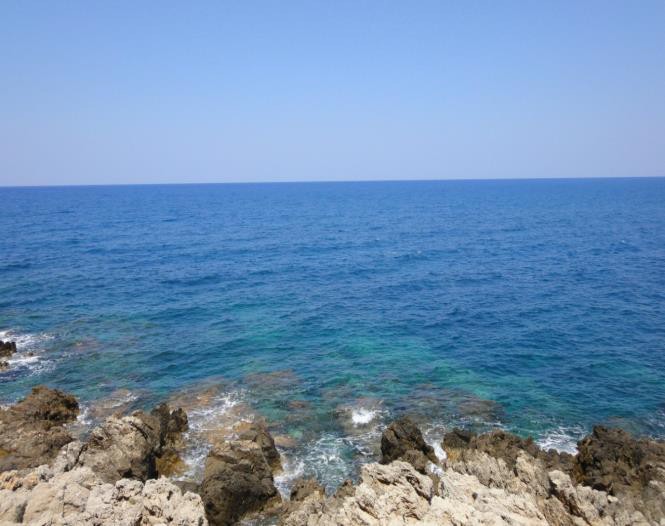
Lonely fountain
In the silent secluded part of the town It offers all cool splatters to us.
And takes urban noises lying down, This swatch of sparkling freshness without fuss.
It prompts our worn-out bodies to life, And we realize we stay still alive.
It brings back our forces hijacked by the heat,
Increases excitement and vital heartbeat.
It scatters its drops to caress a tired mind And takes care of a mental ailment.
Its wet coolness helps us not to run wild When we feel our wishes unfulfillment.
We have a special perk to feel its fresh affinity
Which returns us maxed-out emotions.
So, sit on the bench next to me, Let's relish this water infinity.

-
Read the poems. Read the sentences and write T (True), F (False), Not Stated (NS):
-
Both poems are about nature. T/F/NS.
-
The author compares the ocean with a sportsman. T/F/NS.
-
The author would like to swim in the ocean because she wants to learn the swim. T/F/NS.
-
The author admires the ocean in the evening. T/F/NS.
-
The author compares the sunset with a completed work. T/F/NS.
-
According to the autor the fountain can improve human mood. T/F/NS.
-
You can admire the fountain only in the evening. T/F/NS.
-
-
Make a cluster “emotions and mood”
-
Find the synonyms for the following words:
-
persuaded – excited, convinced, frightened
-
calmness – tranquility, darkness, excitement
-
grueling – interesting, difficult, dangerous
-
secluded – positive, murky, isolated
-
hijacked – kidnapped, boring, dull
-
infinity – boundlessness, warmth, strengh
 Text № 8 POLICE
Text № 8 POLICE
A murder has been committed but the suspect denies everything. He claims not to know the victim. He says he never knew him, never went near him, never touched him… The police and the judge are convinced that he is not telling the truth. But how to prove it?
Scientific Police Weapon

At the crime scene, investigators have gathered every possible shred of evidence imaginable: fibres from fabrics, hairs, finger marks, cigarette ends…The few hairs found on the victim’s jacket are red. And they look strangely like the suspect’s. If it could be proved that these hairs are indeed his, this would be evidence that he had in fact met the victim.
Every individual is unique
Specialists set to work. They examine some cells at the root of these hairs and some of the suspect’s blood cells. In the nucleus of each cell in our bodies there is DNA. What is it? DNA is like a necklace made of two twisted strings of pearls. Imagine that these pearls come in four different colours and that thousands of coloured pearls (which make up a gene) are strung in a very specific order. In each individual this order is exactly the same in all the cells in the body: those of the hair roots as well as those of the big toe, those of the liver and those of the stomach or blood. But the order of the pearls varies from one person to another. Given the number of pearls strung in this way, there is very little chance of two people having the same DNA, with the exception of identical twins. Unique to each individual, DNA is thus a sort of genetic identity card. Geneticists are therefore able to compare the suspect’s genetic identity card (determined from his blood) with that of the person with the red hair. If the genetic card is the same, they will know that the suspect did in fact go near the victim he said he’d never met.
Just one piece of evidence

More and more often in cases of sexual assault, murder, theft or other crimes, the police are having genetic analyses done. Why? To try to find evidence of contact between two people, two objects or a person and an object. Proving such contact is often very useful to the investigation. But it does not necessarily provide proof of a crime. It is just one piece of evidence amongst many others.
We are made up of billions of cells
Every living thing is made up of lots of cells. A cell is very small indeed. It can also be said to be microscopic because it can only be seen using a microscope which magnifies it many times. Each cell has an outer membrane and a nucleus in which the DNA is found.
Genetic what?
DNA is made up of a number of genes, each consisting of thousands of “pearls”. Together these genes form the genetic identity card of a person.
How is the genetic identity card revealed?
The geneticist takes the few cells from the base of the hairs found on the victim, or from the saliva left on a cigarette end. He puts them into a product which destroys everything around the DNA of the cells. He then does the same thing with some cells from the suspect’s blood. The DNA is then specially prepared for analysis. After this, it is placed in a special gel and an electric current is passed through the gel. After a few hours, this produces stripes similar to a bar code (like the ones on things we buy) which are visible under a special lamp. The bar code of the suspect’s DNA is then compared with that of the hairs found on the victim.

-
Read the questions and choose the answers A, B, C, D:
-
To explain the structure of DNA, the author talks about a pearl necklace. How do these pearl necklaces vary from one individual to another?
-
They vary in length.
-
The order of the pearls is different.
-
The number of necklaces is different.
-
The colour of the pearls is different.
-
-
What is the purpose of the box headed “How is the genetic identity card revealed”?
-
A To explain A. what DNA is.
B. what a bar code is.
C. how cells are analysed to find the pattern of DNA.
D. how it can be proved that a crime has been committed. 3 What is the author’s main aim?
A To warn.
B. To amuse.
C. To inform.
D. To convince.
4 The end of the introduction (the first shaded section) says: “But how to prove it?” According to the passage, investigators try to find an answer to this question by
-
interrogating witnesses.
-
carrying out genetic analyses
-
interrogating the suspect thoroughly.
-
going over all the results of the investigation again
-
Where we can find this text?
-
in a school wall paper
-
in an educational magazine
-
in a travel guide
-
-
Read the sentences and correct the mistakes:
-
If it could be proved that these hairs are indeed his, this would be statement that he had in fact met the officer.
-
DNA is like beads made of two twisted strings of pearls. Imagine that these pearls come in four similar colours and that thousands of coloured pearls (which make up a gene) are strung in a very specific order.
-
Given the number of pearls strung in this way, there is very big chance of two children having the same DNA, with the exception of identical twins.
-
It can also be said to be tiny because it can only be seen making a microscope which magnifies it many times.
-
The geneticist takes the few grains from the base of the hairs found on the murderer, or from the saliva left on a cigarette end.
-
After a few hours, this produces spots similar to a bar code (like the ones on things we buy) which are visible under a special light.
 Text №
9
Text №
9
A b o u t a B o y

Marcus is a schoolboy who lives with his mum, who is depressed. Marcus has a bad time at school - he gets bullied quite a lot, especially because o f the clothes his mum makes him wear.
Marcus has met Will, a rich lazy man who makes friends with Marcus and buys him new trainers. Here, Marcus and his mum are going home after visiting Will at his flat.
‘You’re not going round there again,’ she said on the way home.
Marcus knew she’d say it, and he also knew that he’d take no notice, but he argued anyway. '
'Mmm..Why not?’ ‘If you’ve got anything to say, you say it to me. If you want new clothes, I’ll get them.’
‘But you don’t know what I need.’ ‘So tell me.’
‘I don’t know what I need. Only Will knows what I need.’
‘Don’t be ridiculous.’
‘It’s true. He knows what things kids wear.’
‘Kids wear what they put on in the mornings.’
‘You know what I mean.’
‘You mean that he thinks he’s trendy, and that [...] he knows which trainers are fashionable, even though he doesn’t know the first thing about anything else.’ That was exactly what he meant. That was what Will was good at, and Marcus thought he was lucky to have found him.
‘We don’t need that kind of person. We’re doing all right our way.’ Marcus looked out of the bus window and thought about whether this was true, and decided it wasn’t, that neither of them were doing all right, whichever way you looked at it.
‘If you are having trouble it’s nothing to do with what shoes you wear, I can tell you that for nothing.’
‘No, I know, but - ’ ‘Marcus, trust me, OK? I’ve been your mother for twelve years. I haven’t made too bad a job of it. I do think about it. I know what I’m doing.’ Marcus had never thought of his mother in that way before, as someone who knew what she was doing. He had never thought that she didn’t have a clue either; it was just that what she did with him (for him? to him?) didn’t appear to be anything like that. He had always looked on being a mother as straightforward, something like, say, driving: most people could do it, and you could mess it up by doing something really obvious, by driving your car into a bus, or not telling your kid to say please and thank you and sorry

-
Read the extract again. Find the part of the text which tells us that Marcus...
-
is 12 years old.
-
and his mother are not walking home.
-
thinks that both he and his mother have problems.
-
begins to see his mother differently.
-
doesn’t think very highly of some of the kids at his school.
-
is happy that he has met Will.
-
Match the highlighted words in the extract with the definitions.
-
up-to-date with modern fashion
-
do it in a really bad way
-
knows nothing at all
-
simple; not complicated
-
give advice for free
-
used bad words (words that people think are rude)
-
crazy
-
no matter how
-
Read the sentences and write T (True), F (False), NS (Not Stated):
-
Marcus has bad relations with his classmates. T/F/NS.
-
In Marcus's class all pupils are from rich families. T/F/NS.
-
Marcus mother is happy that her son found Will. T/F/NS.
-
According to Marcus mother human problems don't depend on clothes they wear. T/F/NS.
-
From the text we knew that Marcus quarrel a lot with his mum. T/F/NS.
-
Marcus thought that it is easy to be a parent. T/F/NS.
-
Text № 10
 They might not come in space
They might not come in space

Whether or not there is life on other planets is one of the great mysteries of our time. Some people are sure that other life forms exist and say they may have already paid us a visit. Others believe that aliens must have built things like the pyramids because of the technology involved. A significant number of people claim to have seen strange spaceships in the sky, and some even claim
that they have been abducted by them.

Of course there are also many people who believe that other life forms can't exist and that Earth is the only inhabited planet in the whole universe. One man who thinks that other forms of life are almost certain to be 'out there' is one of the world's most famous scientists, Stephen Hawking. And he thinks we should be worried, very worried. He has suggested that aliens are very likely to exist - but that instead of trying to find them, we should be doing everything we can to hide from them. He
thinks they might not be quite as friendly as we imagine.


The universe. Hawking says, has 100 billion galaxies. Each one of them contains hundreds of millions of stars. In such a big place, Earth can't be the only planet with life on it. Most life forms, he thinks, will be simple - the sort of life that has lived on Earth for most of its history. But with so many different life forms out there, some could be intelligent and some could even be dangerous.
And if they are out there, Hawking believes that contact with them might be the end for us. If they have the technology to travel the extensive distances required to reach us, then in his opinion they are bound to have the technology needed to build better weapons than us. They might only see Earth as a place of valuable resources. They may simply come to Earth, take what they want destroy the rest and then leave again. He argues: 'We only have to look at ourselves to see how intelligent
life might develop into something we wouldn't want to meet.'

Hawking warns that trying to make contact with other life forms might be 'a little too risky'. He said: 'If aliens ever visit us, I think the result will be like when Christopher Columbus first landed in America, and that didn't turn out very well for the Native Americans.' Hawking is not the only one who believes in intelligent life from outer space. Lord Rees, another famous scientist, recently asserted that aliens could be so advanced that they might exist in forms that are too complicated for us to understand. Sot maybe it's time to forget our ideas of little green men who 'come in peace', turn off the radio signals we're sending into space: forget about sending rockets outside of our solar system, and try and pretend that we really are alone in the universe.
-
Read the article. Mark the statements T (true) or F (false). Then work with a partner and correct
the false statements.
-
Whether there is life on other planets is a question that divides people.
-
Stephen Hawking is completely sure that we are not alone in the universe.
-
Hawking believes that all life forms on other planets will be very basic.
-
He says that any alien visitors to Earth would clearly have more advanced technology than we have.
-
He believes alien visitors might try and make Earth their new home.
-
He uses an example from history to illustrate
-
Complete the sentences with right answers A, B or C:
-
Some people are sure that other life forms exist and say
-
they live among humans.
-
they may have already paid us a visit.
-
they hide on the Moon
-
-
A significant number of people claim to have seen strange spaceships in the sky, and some even claim that
-
they have been abducted by them.
-
they have been examined
-
they received useful information about aliens
-
-
According to Stephen Hawking we should
-
try to find a contact with aliens
-
try to hide from them
-
try to learn more about them
-
-
Hawking is persuaded that most of life forms outside our planet
-
are intelligent
-
are simple
-
are well-educated
-
-
Hawking thinks that aliens treat our planet as
-
a good place for living
-
a place of valuale resources
-
a place to protect
-
-
Hawking compare the visit of aliens with Christopher Culumbus's discovery of America in order
-
to
-
show how fruitful this visit might be
-
show how risky this visit can be for humans
-
show what consequences this visit might bring
 Text №
11
Text №
11
The Remains of the Day
Stevens has spent his life as a butler, working for Lord Darlington. He is now an elderly man. A t the end o f the book, he finds him self sitting alone on a bench, on a pier at the seaside. A stranger begins to talk to him, and Stevens starts to tell the man about his life and his feelings
about Lord Darlington.
You must have been very attached to this Lord whatever. And it’s three years since he passed away, you say? I can see you were very attached to him, mate.’
‘Lord Darlington wasn’t a bad man. He wasn’t a bad man at all. And at least he had the privilege of being able to say at the end of his life that he made his own mistakes. His lordshp was a courageous man. He chose a certain path in life, it proved to be a misguided
one, but there, he chose it, he can say that at least. As for myself, I can’t even claim that. You see, I trusted. I trusted in his lordship’s wisdom. All those years I served him, I trusted I was doing something worthwhile. I can’t even say I made my own mistakes. Really - one has to ask oneself - what dignity is there in that?’
‘Now, look, mate, I’m not sure I follow everything you’re saying. But if you ask me, your attitude’s all wrong, see? Don’t keep looking back all the time, you’re bound to get depressed. And all right, you can’t do your job as well as you used to. But it’s the same for all of us, see? We’ve all got to put our feet up at some point. Look at me. Been happy as a lark since the day I retired. All right, so neither of us are exactly in our first flush of youth, but you’ve got to keep looking forward.’ And I believe it was then that he said:
‘You’ve got to enjoy yourself. The evening’s the best part of the day. You’ve done your day’s work. Now you can put your feet up and enjoy it. That’s how I look at it. Ask anybody, they’ll all tell you. The evening’s the best part of the day.’ [...]

![]()
It is now some twenty minutes since the man left, but I have remained here on this bench to await the event that has just taken place - namely, the switching on of the pier lights. As I say, the happiness with which the pleasure-seekers gathering on this pier greeted this small event would tend to vouch for the correctness of my companion’s words; for a great many people, the evening is the most enjoyable part of the day. Perhaps, then, there is something to his advice that I should cease looking back so much, that I should adopt a more positive outlook and try to make the best of whatever remains of my day. After all, what can we ever gain in forever looking back and blaming ourselves if our lives have not turned out quite as we might have wished? [...] What is the point in worrying oneself too much about what one could or could not have done to control the course one’s life took? Surely it is enough that the likes of you and me at least try to make our small contribution count for something true and worthy. And if some of us are prepared to sacrifice much in life in order to pursue such aspirations, surely that is in itself, whatever the outcome, cause for pride and contentment.
by Kazuo Ishiguro
-
Read the extract quickly and choose the best ending for the statement.
Stevens thinks that perhaps he should stop ...
-
talking to people he doesn't know
-
thinking about the past so much
-
going out in the evening.
-
Read the extract again. Correct these sentences by referring to the extract.
-
Lord Darlington died five years ago.
-
Stevens thinks that Lord Darlington made the right decisions.
-
The stranger is a young man.
-
The people on the pier aren't happy when the lights come on.
-
Stevens thinks that it’s useful to reflect on what he could have done better in his life.
-
Match the highlighted words in the extract with the definitions:
-
a feeling of self-respect, or behaviour that shows self-respect
-
people who are looking for fun
-
the time when you are young
-
an important male servant in a large house
-
feeling pleased with your situation, and not wanting it to change or improve
-
not correct because it's based on wrong information or beliefs
-
the things you hope to achieve
-
support the idea that something is true, or someone is honest
 Text №
12
Text №
12
Everybody’s Tweeting
When Twitter co-founder Jack Dorsey posted his first Tweet on his newly created website even he couldn't have imagined that just a few years later over 200,000,000 people would be doing the same thing at least once a month. With the words 'just setting up my twttr', Jack launched a site that would change how we communicate forever. Twitter was originally created as a messaging system for a podcasting website, but it took on a life of its own as people realised it offered them the power to connect with millions of people instantly. Suddenly everyone had a voice, as long as it wasn't longer than 140 characters. But what are we using it for, and just how is Twitter changing the way we do things?
![]()
Oh no! I've just heard about Robin Williams - so sad. Astor, 16
1 Perhaps the greatest impact Twitter has had is on breaking news. Before Twitter, news had to get the attention of a journalist, who then had to make sure the news was accurate and true before finally broadcasting it on the radio or TV. These days anyone who happens to be in the right place at the right time with a Twitter account can post news the second it happens. With retweets it can be halfway around the world in seconds. A perfect example of this was when a US flight made an emergency landing in the Hudson River in New York City. 'There's a plane in the Hudson. I'm on the ferry going to pick up the people. Crazy’ is how eyewitness Janis Krums broke the story to the world with this Tweet and a photo of the extraordinary event.
![]()

OMG I've just seen Ariana Grande down town. Can't wait for the concert tonight. Rita, 14
2 Young people have always loved to follow their pop idols, and Twitter has made it a whole lot easier. Before the Internet, teenagers used to join the fan clubs of their favourite bands and write letters to their heroes. If they were lucky, two weeks later they'd get a reply written by the club secretary. A few times a year they'd receive a magazine updating them on all the band's 'news'. Today’s teenagers don't need to wait. By following their idols on Twitter they get all the news the minute it happens. They get to hear what they had for breakfast, what they did the night before, what they're thinking as they sit waiting for a plane, and what they're going to do the next day. They get
to hear it directly from the bands themselves.

-
Read these statements about Twitter. Match them with the person you think said them. Which do you think is the least trustworthy? Why?
-
a psychologist
-
a politician
-
a linguist
-
an IT expert
-
an advertising executive
a We have noticed that people use fewer abbreviations on Twitter than in texting, and tweets seem to show more creative word use.
b Young people sometimes make things public that they regret later. This can cause emotional problems and frequently a feeling of helplessness.
c We're trying to develop a system that will help people to upload multiple photos faster.
d We use social media in order to spread our key messages more efficiently.
e Twitter - quite simply the most effective way to reach our target consumers.
-
Read the sentences and write T (Frue), F (False), NS (Not stated):
-
Twitter was originally created as a messaging system for a podcasting website. T/F/NS.
-
Thanks to twitter we can keep in touch with our friends abroad. T/F/NS.
-
People should pay for Twitter. T/F/NS.
-
The invention of Twitter made the life of fans easier. T/F/NS.
-
Twitter contributes to the evelopment of education. T/F/NS.
-
Twitter helps people to protect their rights. T/F/NS.
-
-
Complete the sentences with a right word:
-
With the words 'just setting up my twttr', Jack launched a site that would change how we study forever.
-
Unfortunately everyone had a right, as long as it wasn't longer than 140 characters.
-
These days anyone who happens to be in the right place at the right time with a Twitter account can speak about events the second it happens.
-
By admiring their idols on Twitter they get all the news the second it happens.
-
Twitter allows people who think the same way to organize the clubs and do something about the things they care about.
-
They can share information, organise clubs and put pressure on authorities and big businesses to change.
 Text № 13
Text № 13
BECOMING AN EXPERT LANGUAGE LEARNER
Aureliano Verdi, 22, has spent much of his life studying languages for fun. He’s fluent in 16 of them, including Farsi, Arabic, Lithuanian and Korean, and here he describes the five principles he uses in order to master new vocabulary quickly and effectively in any language.


Young children are often said to be the real experts when it comes to language learning. Up until the age of about seven, they are able to pick up the language they are exposed to, without the need for a teacher to explain the difference between the tenses, or between subject and object pronouns. Somehow, they just manage to get it, and they do so unconsciously, in other words without making any real effort. So perhaps it’s unsurprising that so many courses, apps and language teaching materials claim to get you learning a foreign language as an adult in the same way you acquired your first language as a child. But is that feasible?
Or even desirable? Adult learners should not be underestimated. It might take a child seven years to become reasonably proficient (albeit with a restricted vocabulary), whereas an adult can reach an advanced communicative ability in one year. That might sound like
a bold claim, but I am living proof, having attained intermediate to advanced level in 16 of them – and most of those were as an adult. For me, the key to learning so many languages has been the ability to combine the unconscious methods we used as children with the conscious methods used by adults. We can achieve the best of both worlds by following my five principles, in order to become expert vocabulary learners, whatever the language.
1

A language such as English has something in the region of one million words. But who knows that many? Or, more to the point, who wants to know that many? The ability to filter out what you don’t need is a key skill for any language learner. If you don’t do this, and you try to look up every single word in a text, well, that’s like reading an entire newspaper just to get to the sports page! Don’t make this mistake. Opt instead for the most useful words in a language. Focus on what’s going to be of use for you. So, if you’re a doctor, you might need to know that another word for ‘skull’ is ‘cranium’. But if you’re not, odds are that you can get by without knowing this word, so go for a
more useful one instead!
2
Identifying words to learn is key, but if you try to absorb these words out of context, you’ll have a hard time fitting them all in. So what I advise is that you connect new information in your head to existing information. Let’s say you already know the adjective confidential (meaning secret), and then one day you learn the multi-word verb keep something to yourself (meaning not share information): you could link these two items of vocabulary in your mind. You can think of keeping something to yourself as being what you would do with confidential information. Or the other way round: confidential information is something you would keep to yourself. The words fit together into a context like pieces of a puzzle.

-
Complete the blog post by putting the headings in the correct places (1–5).
Storage Use Association Selection Review
-
Find words in the text which mean:
-
learn completely (introduction)
-
realistic (introduction)
-
achieved (introduction)
-
select (paragraph 1)
-
gets worse (paragraph 3)
-
continue to keep (paragraph 4)
-
writing quickly and without care (paragraph 4)
-
make one thing become part of something else (paragraph 5)
-
-
Decide what point Aureliano was making about effective language learning when he mentioned the following:
-
children aged up to seven 2 his own success as a language learner 3 the sports page of a newspaper 4 the forgetting curve
-
5 an envelope 6 Boucher and Lafleur’s research
 Text №
14
Text №
14
Looking for work
A man and a woman carrying a little girl in her arms slowly approached the village of Weydon-Priors on foot. It was a late summer evening and the man hoped to find work in the surrounding farms. England and in the early part of the nineteenth century a young man could always find work if he was prepared to look for it.

The man, Michael Henchard, was young and tall, he had a rather serious- looking face and he was very suntanned from long hours spent working in the
fields. His wife, Susan, was also young and her face might once have been attractive, but it now had the bitter look of a woman who had been badly treated
by life. Although they walked side by side and they were clearly a small family, there was no sense of closeness or fondness between them. He was reading something on a sheet of paper and he seemed almost not to notice her. She, having nothing to say to him, spoke quietly and soft ly to her little daughter.
* * *

As they got closer and closer to the village, they heard the sounds of a fair. They walked towards it and came across a number of large square tents, which were selling different kinds of food and drink. Hungry after their long walk, they decided to eat something and went into one of the tents. Inside they found people sitting at long, narrow tables that went along each side of the tent. In the middle was a red-faced woman who was serving ‘furmity’ from a big pot over a fire. This was a hot mixture of corn, milk, raisins and other ingredients. The young woman ordered three bowls of
furmity and they sat down to eat.

Despite being hungry, Michael Henchard did not like the mixture and wished it was a glass of beer instead. As he was thinking this, he noticed that, for a little extra money, the old woman added alcohol to the furmity of some of the others in the tent. She poured it quickly and quietly from a bottle, which she kept under the table. So he passed his bowl to her and, with a little nod and a smile, she added some alcohol to his too. Now he found the furmity a much tastier mixture. In fact, it was
so tasty that he soon asked for more.

After the first bowl he felt relaxed and with the second he was sharing amusing stories with other men in the tent. The third made him a little aggressive and with the fourth he was looking for trouble. The young woman saw, too late, that it was going to be difficult to change her husband’s mood. Their little daughter, who had been quiet up to that point, was now tired and beginning to complain. ‘Michael, it’s time to leave. We have to find a place to spend the night,’ she reminded him, trying to
pull him away from the table.
* * *
But Henchard was not listening to her. The conversation amongst the men had turned to the high ideals of youth and the low realities of later life. ‘I got married when I was eighteen, like a fool,’ said Henchard, with bitterness. ‘I could have been someone important – I could have made my

-
Read the sentences and write T (true), F (false), or ? (the answer isn’t in the text).
-
Susan doesn’t know that the woman is putting alcohol into Henchard’s furmity.
-
Henchard starts by asking a higher price for Susan.
-
Henchard has been married to Susan for three years when he sells her.
-
Susan and Elizabeth-Jane walk to Casterbridge.
-
An old friend tells Susan where Henchard is.
-
There are only men at the dinner.
-
Answer the questions.
1) Why is Susan surprised when she sees Henchard again?
2 What do the people in Casterbridge know about Henchard’s past?
3) What change is Henchard going to make to his business?
-
Choose the right answers for A, B or C:
-
From the first paragraph we knew that
-
A man and a woman were looking for a new house
-
There was a terrible weather
-
The man was looking for a job.
-
-
From the second paragraph we get information about
-
-
the financial state of the family
-
their apprearance
-
their relations with relatives
-
From the third paragraph we knew that furmity is
-
a kind of food
-
an illness
-
a remedy
-
Why the woman was made to persuade her husbans to leave the tent?
-
because she wanted to do some shopping
-
because their daughter became naughty
-
because they promised to visit some friends
-
What the main information we knew from the chapter?
-
a poor family was looking for their relatives
-
a poor family was looking for a better life
-
the husband and the wife were going to divorce.
 Text №
15
Text №
15
Our undiscovered world
Over the centuries, we have discovered more and more about our world, and it’s easy to think that everything that could be discovered already has been. But that's not true - the world holds many more secrets, secrets that are waiting to be revealed. Here we discuss five places that have yet to be opened up completely.
Caves
Deep, dark, cold and often uninhabitable: caves remain one of the least explored and least documented places on Earth. The deepest known cave in the world is Voronya Cave in the central Asian country of Georgia, which is so inaccessible and inhospitable that very little is known about it. The exact number of caves on Earth is yet to be determined. Caving is a very popular activity in Europe, Australia, and the United States, so most of the caves currently documented are from those parts of the world. However, thousands of caves are also thought to exist in China. Most of these remain unexplored.
The Mariana Trench

The deepest and darkest place in the ocean is the 11,000-metre-deep Mariana Trench. Due to freezing temperatures and immense water pressure, the deep ocean is totally hostile to humans. Although technological advances have led to the discovery of many new varieties of deep-sea creature on the ocean floor, there is a lot more to be learnt. In fact only 2% of the ocean floor has been explored. More is known about our solar system than about our oceans. But of course, as further studies are conducted, we will understand more about life in harsh ocean conditions.
The Amazon rainforest

The Amazon rainforest is said to comprise around 50% of all of the rainforests in the world. Its vast biodiversity supports a huge number of species of plants, and over 2 .0 0 0 species of birds and mammals are known to live there. Interest in its climate and resources has resulted in many large exploratory expeditions. However, due to its inaccessibility, full exploration of the region has been
almost impossible. Up to now, something in the region of 2.5 million insect species and 4 0 0 .0 0 0 plant species have been officially documented, but tens of thousands more are believed to live there, waiting to be found.
 G
G
periods of time in the desert, and consequently desert explorations have frequently had tragic outcomes - many
survive long
virtually
is
for human very few
have been
explorations conducted. It impossible to
Although we know where all the Earth’s deserts are, they are among the most unwelcoming environments
beings, so
reenlandAbout 81% of Greenland is covered in ice, so it is almost completely unpopulated and the relatively small number of people who do live there tend to live only on the ice-free coast. Greenland has only been explored to a limited extent, as the climate is quite unsuitable for human life. Although research expeditions are currently being carried out in the northern parts of the country, the most interesting research in Greenland might tell us more about the past than the present. Tubes of ice have been drilled out of the deepest ancient ice, giving scientists a record of the Earth’s environment that goes back thousands of years.
Deserts
people are known to have died on such expeditions. It’s unclear whether anything of particular interest would be uncovered by further investigations into deserts, although there are animal and plant species there which are distinctive because they have developed to survive very high temperatures and with very little water.
-
Read the article and answer the questions:
-
Why has the Voronya Cave not been completely explored?
-
Why is more known about the caves in Europe, the USA and Australia than those in other parts of the world?
-
For what two reasons is the deep ocean difficult for people to explore?
-
How much of the ocean floor remains unexplored?
-
Why is the Amazon rainforest of such great interest to biologists?
-
What can exploration of Greenland help with?
-
W hat are the 'tragic outcomes' of some desert expeditions?
-
What's special about the animals and plants that exist in deserts?
-
-
Find the right endings for the sentences:
-
Voronya Cave in the central Asian country is
-
inaccessible and inhospitable
-
isn't explored enough
-
attracts a lot of tourists
-
The caves currently documented are from
-
Antarctica
-
Europe, Australia and the United States
-
Australia and South America
-
-
We will understand more about life in harsh ocean conditions if we
-
will study this topic better
-
will protect marine life
-
will get the support from authorities
-
-
Full exploration of Amazon rainforests has been almost impossible due to
-
to its inaccessibility
-
to the lack of the financial support
-
to the lack of scientists
-
Greenland has only been explored to a limited extent as
-
it is n't interesting for scientists
-
the climate is quite unsuitable for human life
-
the flora and fauna of the island is in danger
-
-
Deserts are among the most unwelcoming environments for human beings, so
-
people use special transport
-
very few explorations have been conducted
-
scientists decide not to explore them
-
-
What type of text is it?
-
a story
-
a scientific article
-
an advertissment
-
Use this text to make a cluster:
Broken texts Text № 1

BIG
Keepi g he WOf Bu ines r
DATA
е 11
1
There fmd:ings are !юm the UI< l!r Ireland results 1
ot the 2012 rвм an.d sаи вusmess Sd1001 study 1
'Analyti.cs; the real wortd use o.f Ьig data'. Тhеу \
give insight in.to how companies uве Ыg data, trom 1

- t
leveJs of engagement to the roшces of irnormatiori. 1for а ьet.ter 1.mderstanшng of todays market. 1
![]()
![]()
![]()
![]()
the com.pe:titive crd:v. an.1age let's: ttack whe.te c;;omp,amщ; сп .
,-а• --MQ!e ooщpante•.,.. Тhere are four ,,_,,о1В':9Daоta,![]()
1
1
- assoc1ated wt1h В1g Data:![]()

 -
-
Sew.on;
.
Data crPOSdata
1IШ1
17
Ge,щ,atial RFIDscшis
Eill
1
Soci.<11 Medlcr
7
-
Events
"
Emails
11
-1 ii
Dus1neli& .Log Data
,\..Т'ronюctio,n,s ,;n
Where do people gather thelr da1a?
О•1•1
ш
••
4.Execute
1
1
1
1
'' ...
2.Exp1ore
ot UKI spondenfs agreed
3.Вn.gage
о
l.Educate
2012
'�------------------------- ----![]()
1
1 --- ---'""-"-!1----



1
--lilill ------• ,--_-,.
1
1
-
Where can we find this kind of text?
-
in a school magazine
-
in a business journal
-
in a medical leaflet
-
-
What is the aim of the poster?
-
show the readers how business companies use the internet
-
provide the information about the use of the resource the big data in business
-
attract the readers attention to the problems of the environment
-
-
Read the sentences and write T (True), F (false), NS (Not Stated):
-
There is a significant increase of success of the Big Data during the last 2 years. T/F/NS.
-
There are five stages of Big Data. T/F/NS.
-
Companies use Big data to find new contacts abroad. T/F/NS.
-
Big Data is useful when it is necessary to help companies which went bust. T/F/NS.
-
Only 5 % of companies use Big Data in the fulliest sense. T/F/NS.
-
Almost all companies have a good understanding how to use Big Data efficiently. T/F/NS.
-
Companies should pay for the use of Big Data. T/F/NS.
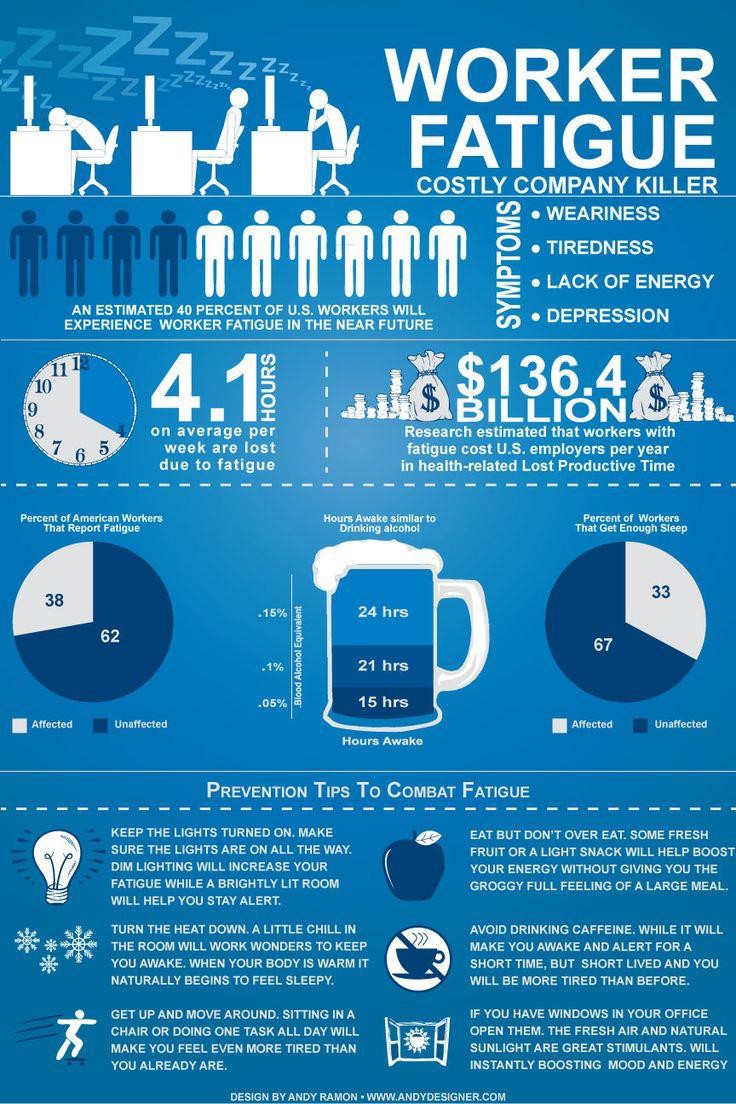 Text №
2
Text №
2
-
What is the main aim of this poster?
-
provide the information how to improve relations on work
-
inform readers about the negative impact of fatigue and how to prevent it
-
explain the rules of a healthy lifestyle
-
-
Who is the target reader of this text?
-
students
-
workers
-
teachers
-
politicians
-
-
Read the sentences and correct the mistakes:
-
There are 4 main symptoms of fatigue: weariness, tiredness, lack of appitite and depression
-
Researchers estimate that workers with fatigue cost U.K. employers 135.4 billion dollars per year.
-
-
To prevent fatigue you should keep the light dim.
-
Some fresh fruit or a light snack will help boost your mood.
-
If you keep the window shut in your office the fresh air and natural sunlight will be good stimulants.
-
4.1 hours of work per month are lost due to the fatigue.
-
Avoid drinking tea while it will make you awake for a short period of time.
-
What the main conclusion we can make:
-
employers should raise the salary
-
we should avoid extreme fatigue because it may cause problems at work
-
companies should pay attention to the schycological health of workers.
-
business companies should provide comfortable conditions for workers.
-
Text № 3
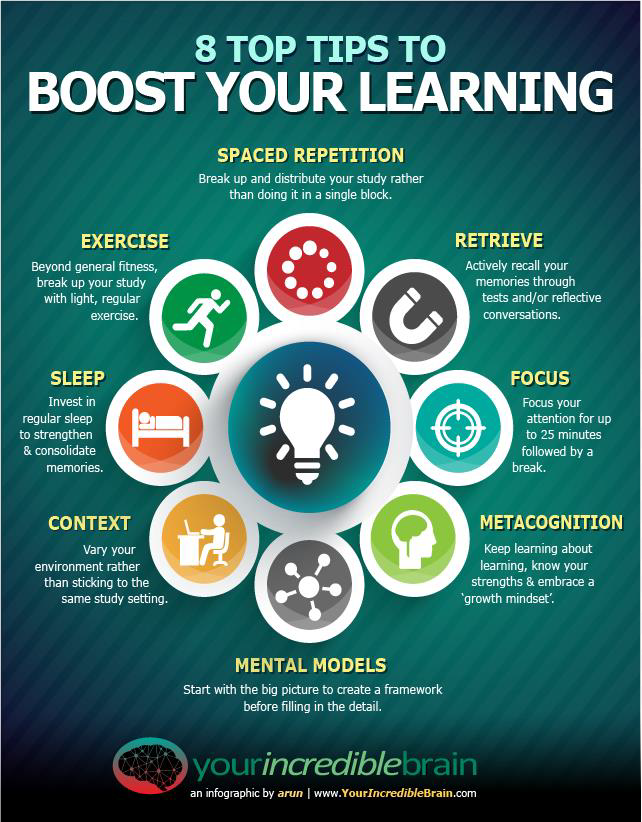
-
What is the main aim of this text?
-
inform the readers about difficulties with studying
-
give useful advice on the improvement of studying
-
offer some ideas about future career.
-
-
Where can you find this kind of text?
-
in a newspaper
-
in an educational journal
-
in a travel brochure
-
-
Read the sentences and write T (True), F (False), NS (Not Stated):
-
If you want to improve your memory you should sleep enough. T/F/NS.
-
If you want to boost your learning find a partner to study together. T/F/NS.
-
You should make breaks every 25 minutes. T/F/NS.
-
You should attend a swimming pool, because it will help you to be more productive. T/F/NS.
-
Participation in speaking lessons and tests will help you not to forget things you learnt. T/F/NS.
-
You should write a strict plan for your studies and follow it. T/F/NS.
-
You shouldn't change your place of study because it will cause the lost of concentration. T/F/NS.
-
Make an alternative cluster “How to boost your learning” using your experience.
Text № 4
![]()
о
ноwWomen LEARN LANGUAGESBUSUU REVEALS DIFFERENCES BEТVVEEN WOMEN AND MEN
 Women complete almost
Women complete almost
48% more
language leaming exercises than men
75%
 100%
100%


![]() B
B
о
Women complete
64% more
language tests than men
ut they are 25% 1ess likely to complete а full language course compared to men+40%
![]()
Women chat
4 times more
 with native
speakers than men
with native
speakers than men

 Women corтect
Women corтect
36% more
exercises from other students than men
lf women are oommitted to а leaming goal, they have а higher
 probability of
achieving it
than their male counterparts
probability of
achieving it
than their male counterparts

Women are
55% more
likely to reward themselves for their leaming efforts
о
О Ьu&J.J Ud. 2013
-
Read the poster and correct the mistakes in sentences:
-
Women complete almost 58 % more language learning exercises than men.
-
Women 25 % more likely to complete a full language course compared to men.
-
If women are commited to a leaning goal, they have a higher chance of achieving it than their male counterparts.
-
Women communicate 6 times more with native speakers than man.
-
Women are 75 % more likely to reward themselves for their learning progress.
-
Women correct 46 % more exercises from other classmates than men.
-
Women complete 64 % more listening exercises than men.
-
Where can we find this text?
-
in medical leaflet
-
in a history journal
-
in an educational magazine
-
in a coursebook
-
What is the main purpose of this text?
-
show how men and women are different in terms of career
-
prove that women are more successful in learning languages
-
compare women and men leasure activities
-
explain the readers why men are more succesful in business.
-
-
What conclusion we may draw from this text?
-
the women sussess in learning languages is based on their stamina
-
women are luckier because they are more intelligent than men
-
women obtain better results in languages because they are more diligent.
-
men are concentrated more on business than on studying.
-
Text № 5
 The New Path Forward
The New Path Forward
Creating Compelling Career Paths for Employees and Organizations
73" of heads of HR do not рlм
to юd mAnagemen lciyers Ьёlсk
,nto 11ю organ,zot,on ,n tne
next S years
-
-
(2) Oesign careers around experiences.
(2) Motivate employees with employabllity.
ak h<>m П\ОfЕ> ч. • Ы ,., rna '1 and na >
(2) Use push marketlng strategles to build awareness of internal opportunities.
(2) Create а talent brokerage for managers to share talent.
-
Who is a target reader of the poster?
-
students
-
employers
-
politicians
-
scientists
-
-
Mark () the purposes of this poster:
-
to show that employees get less interested in the career _
-
involve financial support in business from the government _
-
attract the public attention to the problems of employability _
-
prove that employees who got the education abroad are more sussessful. _
-
invite the target audience to a meeting _
-
to inform about leasure activities for employees. _
-
to show that we should refuse promotion-based culture and opt for growth-based culture in business. _
-
-
Complete the sentences with a correct word:
- Almost 66 % of (companies/enterprises/organisations) with will face an internet skills of transitioning leaders underperform.
-
Organizational delayering has (improved/decreased/spoiled) the number of promotion opportunities, limiting vertical career growth
-
Organizations must (change/opt for/shift) from a promotion-based to a growth- based culture that benefits both the organization and the employees.
-
Growth-based culture can (develop/improve/change) employee ingagement and reduce the likelihood of an internal skill shortage.
-
73 % of heads of HR do not plan to (add/exclude/delay) management layers back into the organization in the next 5 years.
Text № 6

Most beneflcial uses of taЫets and e-readers
for teachinq
-
Educational applications
-
Educational websites
-
Educational e-books/textbooks
Benefits of
 E
E
More than
of teachers want more classroom technoloqy
And up to
of teachers in
low-income schools
"Educational Technology is а Student-Motivator"
ducational TechnoloqyReinforce and expand content
•
-
Motivate students to learn
![]()
Respond to а variety of learning
•"Do much mоге than еvег
before" for my students
•
Demonstrate something 1 can't show in any other way
•
Most Commonly Used Tech Resources
![]()
Online
848%lesson plans
845%
Web·based interactive games and activities
844%
 Websites
to deliver class
information
Websites
to deliver class
information
843%
Online video, images and
articles
Study Methodoloqy
rм sur,.,ey SPinr'IМ SOJ w•Ь•ь.is.edl lntnvlnt:s whh US prrK·12 t t1cMr:1. rм .su.rvty w;,s conductt'd January
15·20, 2013. t!y Vt-r.Ouыt. lnc. .tnd h&!I. а nwrQln cf ttrot or +/· 4.4 а1
-
95'Мо confkliмce ltvet.
PBS LearningMedia··
pbslearningmedia.org
-
Where can you find this poster?
-
in a business journal
-
in an educational magazine
-
in a travel brochure
-
in a coursebook
-
-
What can we learn from the poster? Tick the correct sentences.
-
There are five main benefits of Educational technologies.
-
The majority of teachers want more classroom technology.
-
Emong most used resources tech resources there are online webinars for teachers.
![]()
-
Teachers say than current educational technology doesn't correspond to social needs.
-
From the poster we can what are the most beneficial uses of tablets and e-readers.
![]()
-
Pupils use educational resources more often than students.
![]()
-
We can learn what technologies are available in the classroom.
![]()
-
What conclusion can we draw form this poster?
-
The importance of educational technology is growing.
-
Teachers don't want to use mordern educational technologies because they have a negative impact on physological health of students.
-
The use of educational technology is expensive
-
Technology can be used only in High schools
-
Text № 7
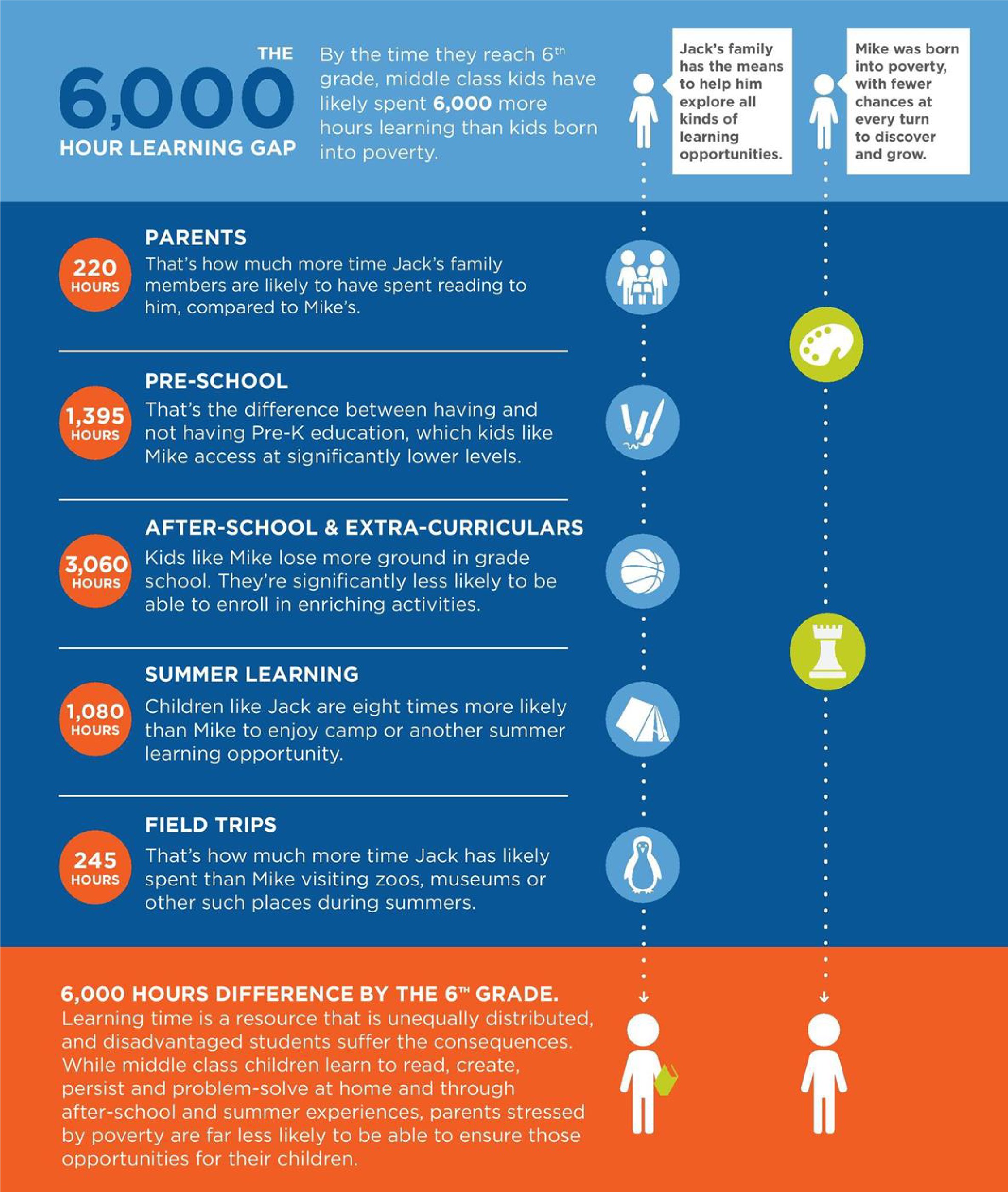
SOURCES: Hofferth and Sandberg (2000) / Bureau of Labor Statistics (2012) / Barnett and Nores (2012) / Barnett, et al. (2012) / Wimer. et al. (2002); Afterschool дlliance (2013) / Gutierrez . К. D" et al. (2010) / Wimer, et al. (2006) / McLaughlin & Pitcock (2009) / Meyer, D" et al. (2004) / lnstitute of Museum and Library Services (2008) / Balfanz. R. (2009) / PBS Frontline, (2012)
ExpandEDSchools
![]()
о
byTAS-
What is the main problem that is explained in this poster?
-
the mental difference between children from different countries
-
the difference of educational level between rich and poor children
-
the problems which poor people face when they begin studying
-
Read the poster and write T (True), F (False), NS (Not stated):
-
Jack's parents spent much more time reading to his son than Mike's parents.
-
Mike received a good pre-school education.
-
Jack attended football after school.
-
Summer learning opportunities are equal for children from poor and rich families.
-
Jack visited museums, zoos more aften during the summer.
-
Children from poor families have less opportunities because their parents are under the stress of poverty.
-
Jack parents hired professional teachers for his son.
-
-
What conclusion can we draw from this poster?
-
poor and rich children are equal in terms of education.
-
children from rich families have more opportunities to receive a good education.
-
children from poor families are not interested in education
-
children from poor and rich families study separately.
 Text №
8
Text №
8

 MEASURE
MEASURE
OOALS& 0B]ECTIVES
![]() [)eflneуошgoals and
objectives.
What do yo,uvant toathievefrom Digital
Marketing?
[)eflneуошgoals and
objectives.
What do yo,uvant toathievefrom Digital
Marketing?
••r,••


---
IDENTIFV VOUR
![]()

![]() Seewhati!II workswe11for
your
tampaig11s.Plan tor improvement.
Re11iseуош stra1egyif neededt
Seewhati!II workswe11for
your
tampaig11s.Plan tor improvement.
Re11iseуош stra1egyif neededt
E·MAILMARKETINC.
-
Gтowyour contact list
CUSTOMERS
Do proper resec1rch\Q fiлdout
yoJJr customersand audience
1DENTIFVVOUR COMPETITORS
-
Compose great emails
-
Create11 schedule
Measure the аЬоvе Sea1vha1works. keiЭp daingЬetter. 11somethingisr11 wor1ung, an ап a!teшa l/e approacli.

MOBILE MARKETING
-
Definethe goals
-
Chooserightplatforms
Ме.аsше thв abov .See wlla!1vorks,keep do ng better. lf something1s11't ,•ю iпg, plan an alternative approach.
В1
CONTENTMARKEТING
DIGITAL MARKETING
STRATEGY
·• -
Performre..,earchto findout your competitors.Figureoul •that'stheir s гаegy towardsdigitalpreserюe'
![]()
DECIDEТНЕROLE
Assigntheroleanddecidewhv willЬеresponsiЫеior which tasks.Skill s-et isthe key fiic101.
Blogging, lnfographics,PressRelea,ses, Forums,Articles,Videos,Podcosling, Webln.11s,Documents,Linkedln& Guest IJloggiп
![]() leas rethe
abo'we. See,vhat works, keep doingb-e!ter. lf
something is1111vorkiпg,
plan an
al ernative:approac .
leas rethe
abo'we. See,vhat works, keep doingb-e!ter. lf
something is1111vorkiпg,
plan an
al ernative:approac .
SOCIALMEDIA
-
Select approprfatechannel
-
Plan aridoptimizeуаш soc:ialconlerit
![]() •easurв theabove.See wha\ works, ke:ep
•easurв theabove.See wha\ works, ke:ep
![]() doiiig betler. lf
sometll·ngisпt
working.pla11ал
doiiig betler. lf
sometll·ngisпt
working.pla11ал
tema[ve approach.
PerfarmKeywordResearch
-
SEO•On Page and OflРгgе
-
Paid Seщ:h Ads
-
Paid SearchAdver1isement
-
РауPerClick(PPG)
![]()
![]() Measure the above. See what1vork$,
keep doiпgbetter. lf
&ornetll·ngisn't1vorking.plan
ап al:emanve
approach.
Measure the above. See what1vork$,
keep doiпgbetter. lf
&ornetll·ngisn't1vorking.plan
ап al:emanve
approach.
Text № 9
![]()
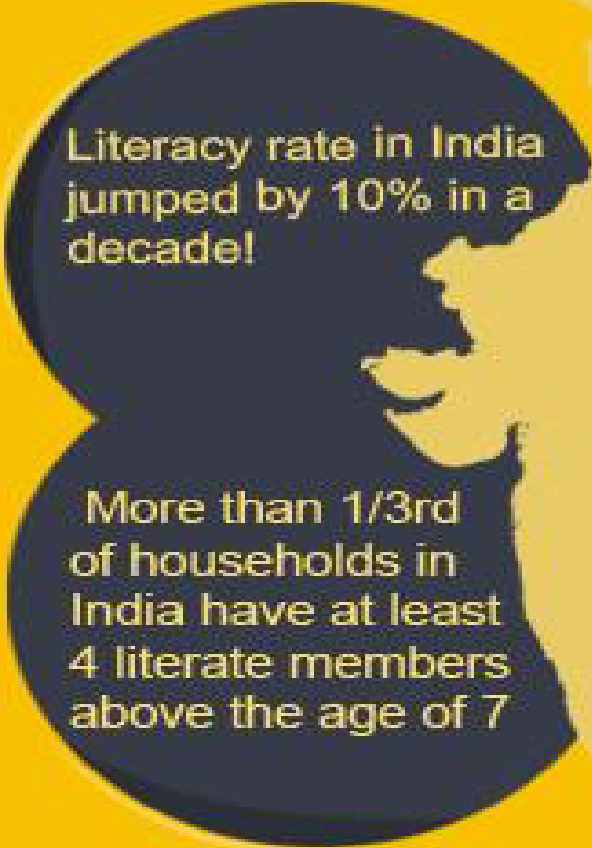 LLT:ERACY
LLT:ERACY
![]()
![]()
38.42% ( 9.56 с.юге) ha.,.e
а t lecst 4 litera•e- mernbeп whlle 9.14% { 2.42 crore) do
not- ha.,.e e<wen 1 1iterate
memЬer.
35.28% of ihe house-holds had at le□ st fаш ltt-era te me moorsa and 14.4% had
nonel lter□c( гаtе of people
□ge-d 7 ye<:1rs а пd а Ьо•,е vas 6<!1.8,4%
Llter□cy r□te of people
aged 7 years апd аЬоvв ls
74.,.;;
But. lndia has the h1ghest population of
·шterate aduts in the woгld-287 mШion
R1Jral агеаs
![]() Urb□n
огеоs
:81111 84%
Urb□n
огеоs
:81111 84%
Least ritemte st-ate-Biha r ![]()
( 63.82%)
 Most literate sta.t-e-Trip,ura
ynn==-..,.._,..,'31 ( 94.6!5%)
Most literate sta.t-e-Trip,ura
ynn==-..,.._,..,'31 ( 94.6!5%)
The sta,te with maximum numbeг of holc.Js.eholds z!Г
without а literate me-mbeг - Bihar
The s.tate with: minim um лumЬer of hou.seholds with.out Q literate mem:Ьe- Kerala
33.59 lakh ( 17.79%)
1.21 lakh оr1.б%
-
Where can you find this poster?
-
in a medical prochure
-
in a business magazine
-
in a coursebook
-
in a scientific journal
-
-
Read the sentences and find the right ending for the them:
-
Literacy rate in India jumped by
-
15 per cent in a year
-
10 per cent in a decade
-
20 per cent in a month
-
-
More than 1/3d of households in India have at least
-
five literate members above the age of eight
-
six illiterate members above the age of seven
-
four literate members above the age of seven
-
-
India has the highest population
-
of illiterate adults in the world
-
of clever students in the world
-
of single men in the world
-
-
The state with maximum number of households without a literate member is
-
Tripura
-
Bihar
-
Kerala
-
What conclusion can we draw from this poster?
-
Population in India is the most literate in the world
-
Although the situation with literacy in India improves this country has the biggest number of illiterate adults in the world.
-
Only rich people in India ate literate
-
Text № 10
% of -t·he population 65 years or over
% of over SO's in overall populatlon
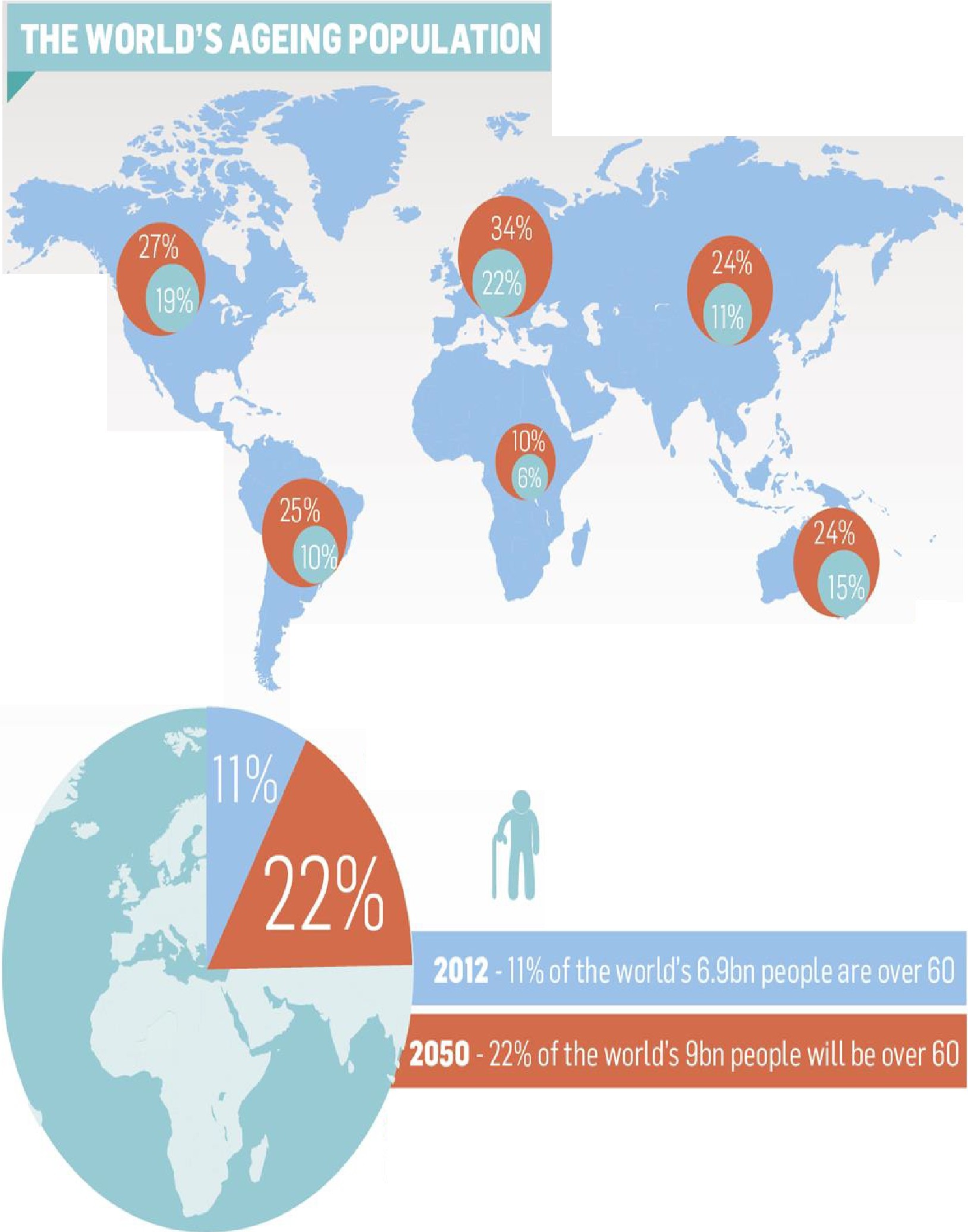
![]()
-
2006 2011 2016Brazil
1
1
2012
-
2050
Japan, lreland and Cyprus face the largest jump in
ageing costs over • l't
![]()
,i ,i
the next decade"ln2050 опе person in three willЬе over 65 ,tl
and опе person in ten will Ье over 80 1 п•-11- -11-
,tttttttt
Between now and 2050 the fiscal burden of the crisis will Ье10%of the ageing-relatedcosts. The other 90% will Ье extra spending оп pensions, health and long-termсаге
China
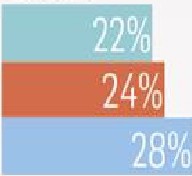
lndia
![]()
Japan

Russia

UK
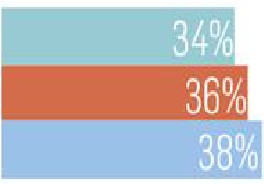
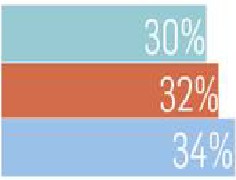 us
us
-
Where we can find this poster?
-
in a newspaper
-
in a coursebook
-
in a travel prochure
-
in a fashion magazine
-
Read the sentences and correct the mistakes:
-
Japan, Ireland and Cyprus suffer from the largest jump in ageing costs over the next year.
-
In 2050 one person in five will be over 60 and one person in nine will be over 80.
-
Between now and 2050 the fiscal burden of the crisis will be twenty per cent of the ageing-related costs. The other will be 90 % will be extra spending on salaries, health and long-term care.
-
In China the overall population of over 50's is 28 %.
-
In UK the overall population of over 50's is 60 %.
-
-
What is the main idea of this poster?
-
give information about the health of the population in the world
-
explain why there are more old people now in the world than before
-
inform target readers that the number of old people increase
-
offer the possibilities to improve the system of medical care in the world
Text № 11
тееnHealth
ТНЕ DANGERS OF SOCIAL MEDIA



"ПENSWHOSPEND f1UEOR MDREMOURS АDAV DNTHEIR DEVICESARE71PERCENТ MORELIИELYТОИАVЕ10NЕ
•rt),
PEOPLEREtYON
SOCfA'tМЕОlд ТО fEHVALIOtTED
{]RISK FACT1U,RFOR SUICIDE." Soci I Mcdi t nsformed t dit1onal methods ol
_LULU GA.HGIA·NAVJIRRO communit:a\i□nwith n a ive rest1l1s Jш tееп girls.
ABOUTТНEIR 1VES.
87% J1 ,:
From 2009-2015,
useof moЫle
?f t enage g1гls,n2015 used :юс1вl
J"i-a1 •
elec.iror1ic devices, for 5"' hours per
day, dо ,ыed
 /'11l?diэ every G1ris were day. 14\
mогеlikely
/'11l?diэ every G1ris were day. 14\
mогеlikely
to suffe-r from deJiression th ш thos:e who used sociзl mediз lessfreq,uefl!ly.
from 8\· 19%,
Te-ens itnpac1ed were 70% ,поrе likely 10 have suicidal thoughts or actions Ihan their peers who reported 1 hour
of device •se daily.
-
What is the main aim of this poster?
-
engage teenagers into social nets
-
prevent teenagers form spending to much time using social nets
-
inform teenagers about the possibilities for successful studying with internet resources
-
-
Read the sentences and write T (True), F (False), NS (Not Stated):
-
Teens who spend five or more hours a day on their devices are happier than their contemporaries.
-
People rely on social media to feel validated about their lives.
-
Housewives use social media every day.
-
Girls who use social nets less frequently are more successful.
-
From 2009 to 2015, use of mobile electronic devices for 5 + hours a day, doubled.
-
Teens who often use social nets have a more successful private life.
-
Overuse of social nets have a negative impact on teenagers self-esteem.
-
-
What conclusion can we draw from this poster?
-
teenagers should use the social nets only for studying
-
teenagers should use social nets less because it is dangerous for mental health
-
social nets should be prohibited
-
teenagers should pay for the use of social nets
Text № 12

-
Where can we find this poster?
-
in a newspaper
-
in a school magazine
-
in a scientific journal
-
in a business brochure
-
Read the sentences and write T (true), F (False), NS (Not Stated):
-
People are completely satisfied with water and sewerage services. T/F/NS.
-
Maintenance of waterpipes is the responsibility of the government. T/F/NS.
-
Fewer customers think their charges are fair. T/F/NS.
-
More customers think that they began to pay more. T/F/NS.
-
Sewerage and water companies became more responsible. T/F/NS.
-
People with a low income pay only for water and they don't pay for sewerage. T/F/NS.
-
Householders became are more responsible for the maintenance of their pipes T/F/NS.
-
What conclusion can we draw?
-
people should waste less water
-
water sewerage companies became more trustworthy
-
the bills for water and sewerage have increases
-
people can choose water and sewerage companies themselves
-
Text № 13
graphitdedign
 The
seat you
pick will most likely Ье the
seat you'II Ье
stuck with for your whole semester Pick your seat wisely.
The
seat you
pick will most likely Ье the
seat you'II Ье
stuck with for your whole semester Pick your seat wisely.
А locker is а great place to cram all your art supplies in.
Don't worry. People аге nIce, and you· 1 get better as an artist.
Seriously, the art kit Is so expensive. Unless yoLI buy it used, horde those Michaels coupons and make frequent trips to Dollarama.

Trust me, they doп't bite. Feel free to ask them for l1elp wheп you пееd 1!.
Go check out the grad show. lt'II Ье worth it
lt's ргоЬаЫу а good idea to pack а lunch. You will save money апd l1ave а little Inоге time to work or that project that is due at the епd of class.
-
What is the aim the poster?
- explain why graphic design is useful in future
-
provide a future student with useful information which can help him to study graphic design
-
offer some tips how to save money during the graphic design course
-
give useful information about teachers of the course
-
Read the sentences and correct the mistakes:
-
Don't worry. People are friendy and, and you'll get better as an artist.
-
The seat you pick will most likely be the seat you'll be stuck with for your whole year.
-
Trust me, teachers don't bite. Feel free to ask them for help when you need it.
-
Don't be afraid to look for admiration.
-
Go check out the teachers show. It'll be worth it.
-
It is probably a good idea to pack a breakfast. You will save money and have a little more time to work on that poster that is due at the end of class.
-
What conclusion can you draw from this poster?
-
the course of graphic design is difficult
-
the first year of graphic design course is not as gruelling as it seems to be
-
the grads of graphic design can find work easily
-
the teachers of this course are high-qualified
Text № 14

 )
1.
)
1.
![]()
![]()
EдRNIHG
TEACHERSURVEY
![]() As piin: of S(II зnnivcrsary <:ct.;:b:ra(ion
of til'ш MiridShзre
Lc.aмi111.g R0J)On: an.d
oomn,i(ш,;:nt ю }
As piin: of S(II зnnivcrsary <:ct.;:b:ra(ion
of til'ш MiridShзre
Lc.aмi111.g R0J)On: an.d
oomn,i(ш,;:nt ю }
1n1spiration pщtiir,g tlie 2.1s C nw,·y envdope We l111.1n,;hed Canada'$ fir$н·.ver e.a.,:ne,• t«hriol y s,;,rvEy . ,
![]()
![]()
![]()

![]()
1
{ to betw, nder t.iпd lie emergiл,gпееd of <:ra гoom tea he aч::r-os Сапаdа

,of teэ.c'hers indic.ш:d
tliey гe<::eived Фе IСТ' plan from tl'u! district or scl)ool
... c,.--;,,,,,.,.i_I,( ,
J. %
._
}
'
А ..,
t) \
'• 'J)
s,uf6ctent lnternet access: in the ,.-,:lassro@m
of ceacl'mrs sэicl they ha.ve
Only
Тор Social
t } Me'dia Sites
i::Ш1
Тор elea,rn1ing
Platforms
- .- }
:Bt ckboэrd De-:n.-ez1..eзxi>
\
-- -:-;--
Student e•ng gement is exponential]y increased
'
when technology is used inthe_,:!:: m. ''


![]()
![]()
![]()
a
.·'о/_ of teachers attribute resources/fuпding77 / О з.s со the: mзi n. b0rrie1· to using cochn<J!ogy i n me <:lassroom
40%lack of pгofessional development
24% lack of suppor:t
 Good news! Teachers are more tech savvy than ever before.
Good news! Teachers are more tech savvy than ever before.
Teachers s.urve.yedf r:ated themselves fn d1e Adap1ioDro lnfooion p\'lase of the JSte NБТS Suшdarr-ds for'Тe;ichers
![]()
Where can we find this poster?
-
in an educational magazine
-
in a historical coursebook
-
in a travel journal
-
in a newspaper
-
Read these sentences and write T (True), F (False), NS (Not Stated):
-
There are five tech tools in the classroom. T/F/NS.
-
Only 58 % of teachers said they have sufficient internet access in the classroom. T/F/NS.
-
Top social media sites are twitter, You Tube and telegram. T/F/NS.
-
Student engagement is low when technology is used in the classroom. T/F/NS.
-
40 % of teachers lack of professional development. T/F/NS.
-
The majority of teachers are sure that lack of qualification is the main barrier to using technology in the classroom. T/F/NS.
-
30 % of teachers lack of support T/F/NS.
-
There are three main eLearning platforms. T/F/NS.
-
What main conclusion can we draw?
-
The use of the internet is harmful for education
-
The use internet resources play an important part in education
-
Teachers and students have difficulties with using the internet due to the lack of access and knowledge.
Text № 15
 7
ESSENTIALS
FOR
ENGLISH
FLUENCY
7
ESSENTIALS
FOR
ENGLISH
FLUENCY
Ф Fl.llllr:Yhl:.COМ
Havea genulne purpose and motivation for learnlng and using English.
Notice English around you, and engage with Engllsh that really interests you.
As much as possiЫe, read and llsten to English that is easyand comfortaЫe for you.
 ФAJJEflCl'Ш.CIIN
ФAJJEflCl'Ш.CIIN
communlcate and collaborate often wlth others, ln person and through medla.

Practice English in dellberate and meanlngful ways.
Plan and set reallstlc goalsfor yourself.
Try out new thlngs without worrying about mlstakes.
ф FllINCY coм
-
What is the purpose of this poster?
-
offer the readers tips for the improvement of the fluency
-
explain why pupils make mistakes in speaking
-
provide useful information about the preparation for exams
-
Complete the sentences with a right word:
-
Have a genuine and motivation for learning and English.
-
Notice English you and engage with English that really you.
-
As much as , read and listen to English that is and comfortable for you.
-
Practice English in and meaningful .
-
Communicate and often with others, in person and media.
-
Plan and set goals for yourself.
-
Try out new without worrying about .
-
Who is the target reader of this poster?
-
students
-
elderly people
-
children
-
teachers
-
Where can we find this poster?
-
in an educational journal
-
in a fashion magazine
-
in a coursebook
-
in a travel brochure
-
Resources
-
Hardy T. The Mayor of Casterbridge. - Cambridge University press. - 2021.
-
Puchta H., Think 4 SP. - Cambridge University press. - 2016
-
Take the Test sample. Questions from OECD’s PISA Assessments. - OECD PUBLISHING. - 2009.
